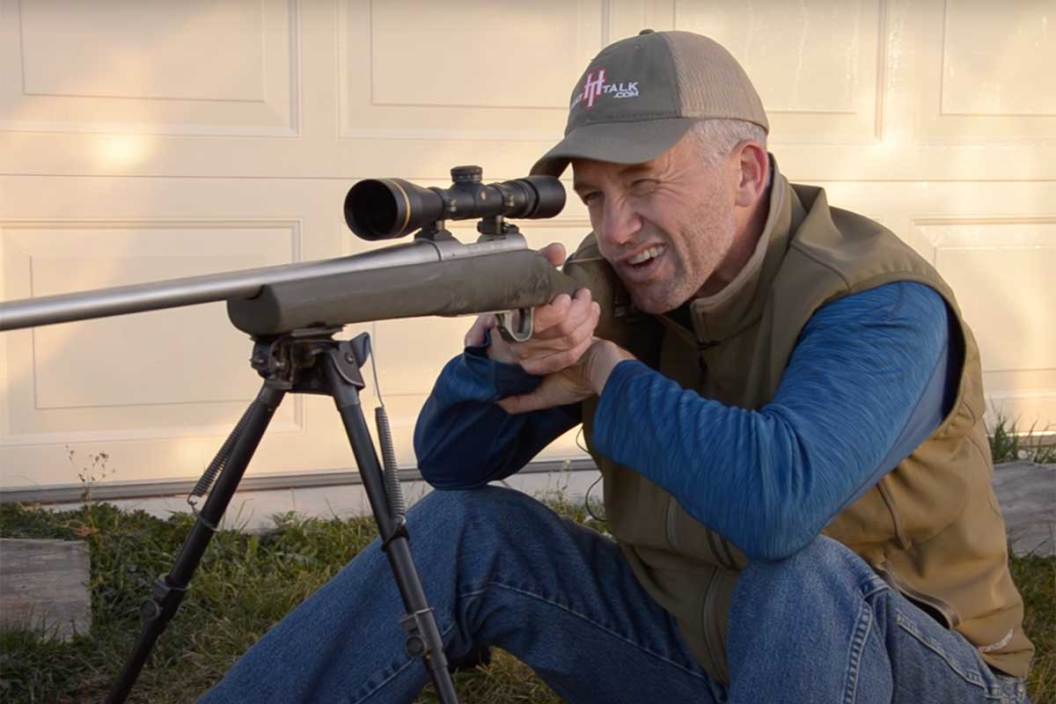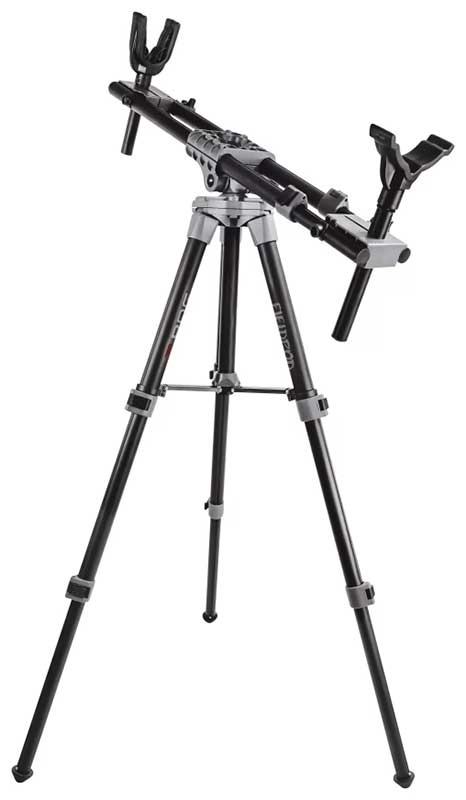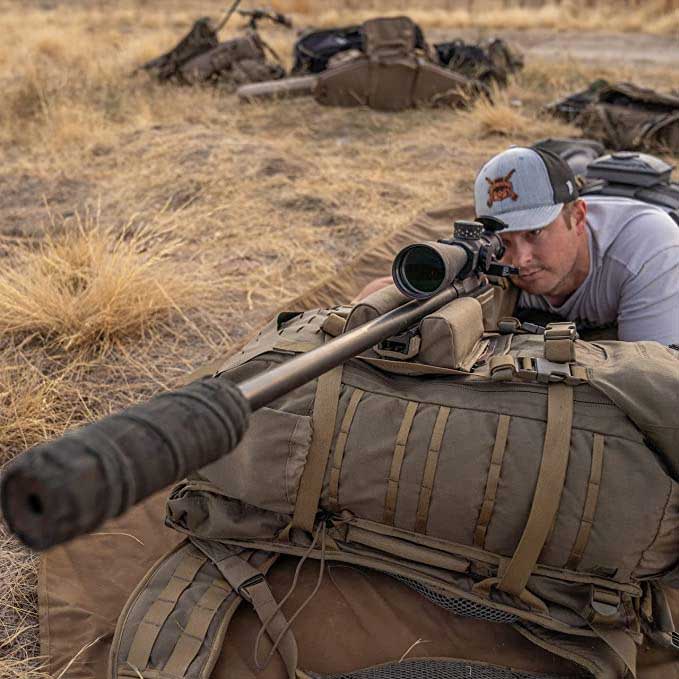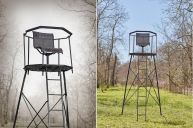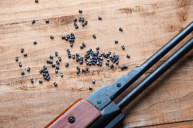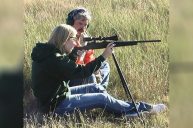Even though it might be the smallest and least time-consuming part of the entire hunt, stabilizing your firearm and shooting from a place of rock solid sturdiness is vital, and the trust it provides can go a long way in the field. There are many options available to hunters seeking stability. The most popular are tripods, shooting sticks, and shooting off a pack. The best options for gaining stability while shooting can be highly debated. At the end of the day, it depends upon what a hunter prefers to carry into the field to help them make accurate shots on animals.
Let's review these shooting aids, considering their advantages and disadvantages. We will also look at who would benefit from each of these options based on what type of hunting they are doing. Let's start with tripods.
Tripods
Tripods are one of the most stable shooting rests and shooting aids available. However, even with added stability, usually there are some disadvantages. The tripod is a three-legged apparatus that can be fitted with a gun rest, allowing the shooter to have a stable platform to place the gun while taking aim. It will keep it steady and allow the shooter to make more accurate shots at their intended target.
While all this is very advantageous to hunters, tripods have drawbacks with certain types of hunting. First off, tripods can be heavy. Hunters may or may not want to carry them around. Some tripods also take time to get out, set up, and adjust for the shooter and their stance, which can be burdensome to mobile or spot and stalk-style hunters.
Tripods have come a long way and are being designed specifically for hunting with lighter weight materials and more compact designs. Getting the tripod stable on uneven terrain is sometimes that few have been able to overcome. When hunting big game animals, your shot opportunity might come out of nowhere and disappear just as quickly, making tripods next to impossible to use in some situations. However, there are situations where they can really come in handy. If you hunt from an elevated box blind or a ground blind, tripods are the way to go for the most accurate shot. The tripod can be easily set up, left in place, and ready to go. They're great for the hunter who will not be moving locations for an extended period of time. Some spot and stalk hunters don't mind carrying a tripod because they can use it to hold and focus their binoculars or spotting scope and then use it to stabilize their firearm when taking a shot, especially at long ranges. If you're able to find a stable one and willing to carry it, a tripod might be the best option for your hunting style.
Shooting Sticks
Shooting sticks are nearly on par with tripods, falling just short of the full-stability a tripod offers, yet providing more mobility and quick deployment. Shooting sticks can often be found in the bipod form or in a monopod form. Thanks to their design and construction, hunters with shooting sticks will often use them as walking poles or as a tool to help them hike rough terrain while also having quick and easy access to their shooting aid. Like tripods, these can have different attachments, allowing the user to connect binoculars, spotting scopes, or shooting rests. They are multifunctional, lighter, and quicker to set up than tripods but offer slightly less stability due to their design.
Big game hunters who scout animals in the backcountry and use a day pack with a base camp-style setup are more likely to employ shooting sticks over tripods. Backcountry hunters who backpack hunt and camp in the wilderness may be more likely to use shooting sticks since they typically try to limit the amount of weight they carry. These shooting sticks are becoming more popular for certain hunters as they are a better alternative to using a full tripod.
Shooting From a Pack
A long-standing shooting aid and gun rest has been an accessory that most of us carry already: a hunting pack. A pack can make for a good and stable gun rest that can be laid on the ground for use in the prone position, or it can be set on a rock or another piece of terrain while kneeling or standing. There is not a lot of setup to this method—outside of swinging it off your back and setting it down. This can be an advantage over tripods and shooting sticks. Most hunting packs will vary in size. If they are meant for day hunting, the pack will likely be smaller than the pack of a hunter who might off-grid camping in the backcountry while they hunt. For ultralight hunters who like to carry as little weight as possible in their pack, shooting off it is a viable option to keep weight down and extra equipment to a minimum.
Even though a pack is a softer rest compared to tripods and shooting sticks, it is still stable enough to be used as an effective shooting aid to make more accurate shots on an animal. There are also pack attachments that help you rest a hunting rifle even more. The downside is the bulk, size, and shape of the pack and the time it takes to get it off to make a speedy shot. The pack may not always be the most maneuverable of shooting aids, but since so many hunters already carry one on their backs, it makes a good amount of sense to practice and be familiar with shooting off your pack.
Shooting Aid Takeaways
The best shooting aid for use in the field is up to the hunter who needs to make the shot. Choosing one may depend upon the type of equipment and weight the hunter wants to carry and the feel for shooting from that specific aid. Tests and comparisons go on between tripods, shooting sticks, and packs. Even considering the differences among the shooting aids, it all comes down to the comfort level and ability of the shooter using it.
Whichever shooting rest a hunter chooses, they should practice extensively with it when preparing for hunts. Use all the different stances or shooting positions you might with that specific piece of equipment. The more practice you get with the process, the better you will be when the time comes to make the shot.
